Exclusively for Tauck guests, join our Italy travel partner, art historian Serena Spinelli, for a special presentation on four works from the extraordinary Ambrosiana Collection housed in Milan’s historic Ambrosiana – a library, art gallery and Academy promoting a love for literature, the arts, science and beauty.
Serena was born in Rome and educated in France, Ireland, Belgium, Canada and the United Kingdom. She holds a Bachelor of Arts with high honors in Art History from Carleton University, Ottawa; a Master of Arts from the University of East Anglia, UK; and a diploma from Sotheby’s Institute in London. Currently based in Milan, she has spent 20 years in the field of Art Education, having organized and conducted lectures, workshops and programs for diverse companies and groups including leading museums, international exhibitions, and cultural associations.
Questions & Answers
What is a codex?
A codex (codice in Italian) is an ancient manuscript in the form of a book containing various folios (separate sheets). Manuscripts are then further divided into several categories and terminology according to the materials used to make them.
Where can I buy Serena’s book on Milan?
Thank you so much for the interest, a book on my personal perspective of Milan is still a work in progress, I am hoping to complete by the end of 2021.
Why do all the women portrayed have one breast showing?
There were two women with this characteristic and the reasons for this are quite different. The first was the Virgin Mary by Botticelli who chose to make use of the “Maria Lactans” iconography where the Virgin is about to breast feed and nurture the baby Jesus- This particular image has a very long history in many cultures.
The second image was an imaginary and allegorical portrait of Lucretia Borgia by Bartolomeo Veneto. She is shown as the personification of Flora, the Goddess of Spring. Her very revealing classical drapery recalls the antique classical sculpture which always served as an inspiration at this time, although the Venetians of the 16th century will often add a seductive tone.
Whence the name Ambrosiana?
The Cardinal Borromeo desired to homage Milan’s patron saint- St. Ambrose who is also one of the four fathers of Christianity- He was archbishop of Milan in the 4th century AD at a very crucial time, just after the Edict of Milan.
Can you comment on Botticelli’s facial expression in the self portrait (detail from Adoration of the Shepherds)?
Amongst the Magis and other people present around the manger we find portraits of Lorenzo de Medici and his court – very elegant and beautiful, slightly supercilious youths – they were certainly the VIPs of Florence at the time. Botticelli fuses the sacred with the profane here and also includes his own self portrait (painters were beginning to sign themselves this way in the beginning). To quote Frederick Hartt “the heavy lidded eyes, the slightly pouting mouth with open lips are pervaded by an expression blending keen intelligence and deliberate withdrawal” In my view the kind of expression that Baudelaire will often sport in 19th century Paris. The cultured dandy who needs to be in the know but also somewhat aloof from it all in order to portray the reality of a society.
You mentioned a cult of drawings of the virgin mary breastfeeding. Did this influence the Flemish artist Rogier van der Weyden ‘s St Luke drawing the Virgin Mary?
The iconography of the Maria Lactans (Breastfeeding Virgin) was certainly very popular in Flemish painting at the time. The Florentine painters were very much exposed to Flemish art by way of all the mercantile business between Florence and Flanders. Botticelli here reverts back to a Flemish typology which had been surpassed in Italy but which he focuses on again during his spiritual crisis.
The cult that I was referring to is specific to the breast milk of the Virgin Mary- In the 13th century many churches in Italy professed to own a drop of her milk.
Doesn’t Bill Gates own a da Vinci codex? Are there more than the Windsor Codex and the one in Milan?
Yes, Bill Gates does own a very small selection of Leonardo’s drawings and sketches. (36 folios)This is the smallest codex – The largest and most varied Da Vinci Codex in the world is in the one in the Ambrosiana in Milan. (1,119 folios) There are roughly 25 Da Vinci codexes in the world. After the Codice Atlanticus (Ambrosiana) the most important is the Windsor, then the Arundel in the British Museum, then a long list of codexes in Paris (Institut de France) Other codexes on the flight of Birds in Torino (Italy) and others still like the Vatican Codex.
Is there a fire in the landscape background of the Botticelli painting? If so what does it signify?
There are no fires in this particular Botticelli, it is actually quite a placid and serene landscape . What you may have noticed is a slender tree with various ramified branches which may have looked like a fire perhaps. The tree may allude in this case to the Tree of Jesse (old Testament- “there shall come forth a rod from the stem of Jesse “) tracing the family of Jesus.
Why are the buildings made of different materials: brick, marble, stucco, plaster and then connected? This is my impression starting at the first slide of the courtyard.
The first slide featured the courtyard of the Great Souls within the Ambrosiana Complex. It is a space which came to be from the joining of different buildings from different periods. When the Ambrosiana needed to expand because of the growing collections they acquired other buildings close by and also constructed a new wing. What can be seen in the slide is the apse of the Church of the Holy Sepulchre (red brick) – also acquired by the Ambrosiana for personal religious use. You can then see a frescoed building in the back and this dates to the 15th century- the oldest of all in this case- it used to be the seat of a brotherhood devoted to charity- It now forms the antechamber to the old reading room which itself was built in 1607. You can also see classical loggias on the right- part of the 1920’s extension of the original building. It will all make sense when you visit the interiors I believe .
Please repeat that quote of DaVinci re: the ability of music to fill in what painting cannot express.
Leonardo wrote that Music was the representation of the invisible (raffigurazione dell’invisibile) – He often compared Music to painting and thought of Music as painting’s little sister. He felt that Music was a way of painting the invisible. He speaks of this topic in his treatise on painting which is contained within the Vatican Codex (Codice Vaticano Urbinate).
What was the name of the villa with the staircase?
That is the entrance staircase to the Poldi Pezzoli Museum – the beautiful home of a distinguished 19th century collector. Full of artistic treasures!
Please recommend a couple of books I should read before visiting Milan. Thank you.
Unfortunately, all the good books I know on Milan are in Italian but perhaps you can find the translations: Storia di Milano by Franco Fava / Milano attraverso I suoi monumenti by Carlo Romussi. It also depends on your specific interests. These are books on the history of Milan. Let me know if you have more specific interests.
What was there such a draw of Milan to those people involved in Art, Design and science?
During the 15th century Milan was one of the most powerful city states in Europe- The Duke Ludovico il Moro from the Sforza Family was a very shrewd political ruler. He knew that to be respected in 15th century Italy you also had to leave your mark in the Arts and foster a humanist perspective. He wanted to compete with the Medici in Florence and the Popes in Rome so he made sure that his own court was a kind of second Athens culturally speaking. Surrounded himself with artists, musicians, humanists, architects, mathematicians…Leonardo was able to be himself in Milan. The Lombards were somewhat more pragmatic than Lorenzo de Medici (who was more intellectual and ethereal) and Leonardo was able to indulge all of his curiosities and carry out a lot of his research. He was involved in military warfare, town engineering, waterworks, mechanical engineering, scenography …a wide range of subjects which were useful to the city of Milan.
The ruling family before the Sforza, the Visconti were also patrons of the arts, bibliophiles, and lovers of music, hence the manuscript illumination “industry” and the high-quality choir of the Duomo and the Castle. Milan has also always been a crossroads between Italy and the countries beyond the Alps, so it was also subject to Northern European Influence.
The interest in Science, technology and design has continued through the ages, helped by the fact that this is where the Italian Industrial Revolution will first take place.
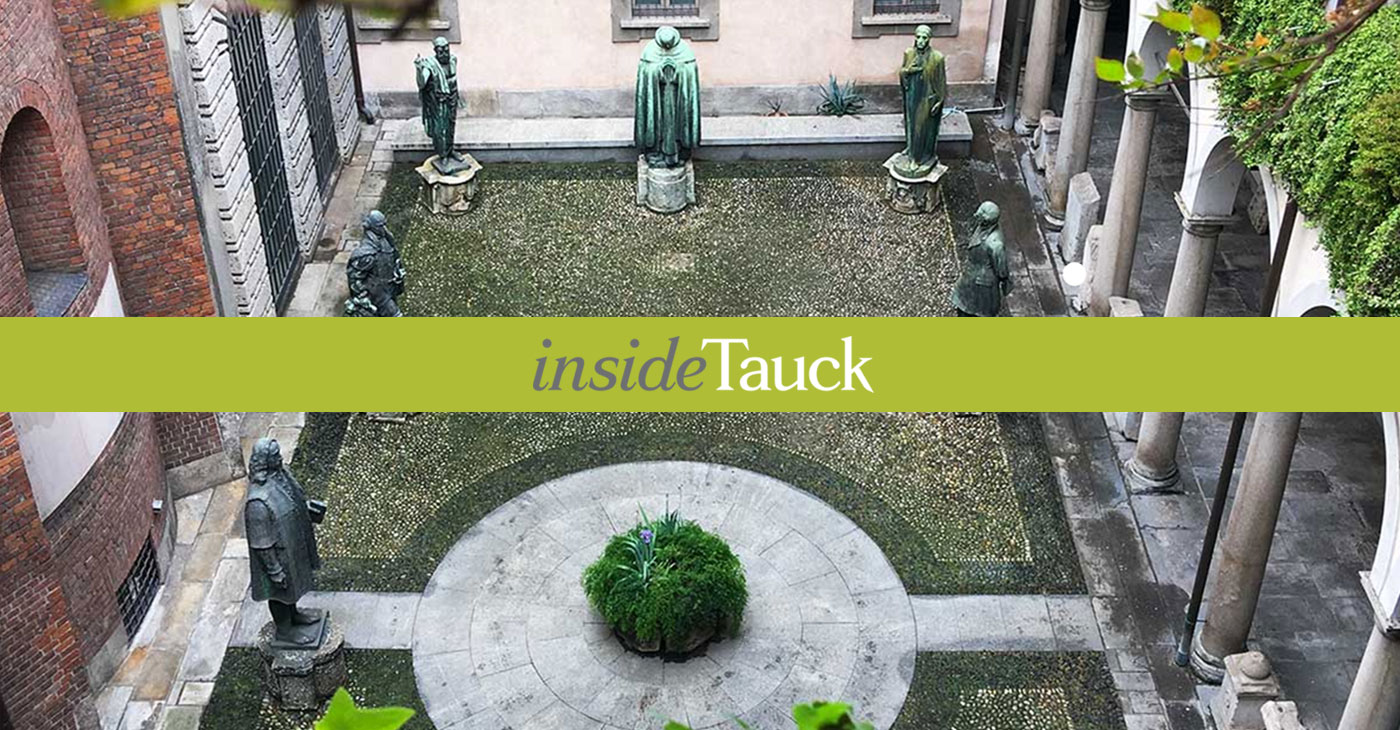
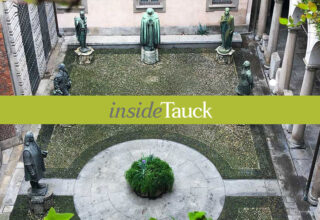



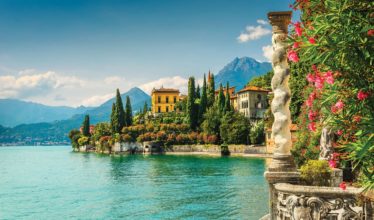
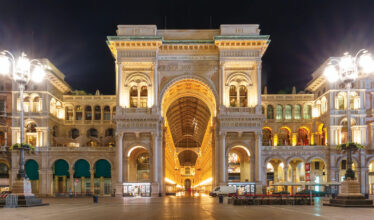
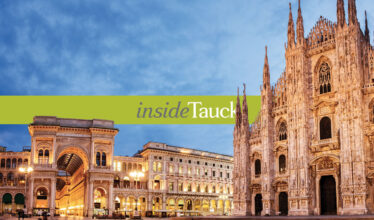
I really learned much from the presentation and the follow-up questions. Thanks
I am very glad you enjoyed it ! Thank you so much for the feedback !
Ms. Spinelli’s presentation on the Ambrosiana collection was a revelation: intriguing, entertaining, beautiful, and certainly enlightening. I felt as if I had been immersed in an art history postgraduate seminar. Thank you , Professor Spinelli and Tauck!
I am so pleased you felt it was a revelation, my goal was to guide you in the discovery of many different forms of beauty and their relation to Milan. To draw that crimson curtain and reveal this particular stage to you was a great pleasure. Thank you so very much for the great feedback and my thanks to Tauck for making this a reality!
Well done. Outstanding lecture. The lecturer was very articulate and knowledgeable. Well chosen art pieces. One big distraction was that the captions were not in sync with the lecturer. The captions ran ahead of the speaker.
Thank you very much for the lovely compliments and it is very good to hear that you enjoyed my personal selection of artefacts. There are many more for you to discover in this venerable Milanese collection! Thanks again.
I’m watching this later, and find it immensely enjoyable. In addition to introducing us to some of the treasures of the Ambrosiana, she referred to many other highlights of Milan. One day, we will need to take a week or so in Milan to wander through them all!
Thank you very much for taking the time to comment and I am very happy you found the narration enjoyable. It was a pleasure to speak of these treasures which continue to feed our souls in numerous ways.
The other collections and museums mentioned were the Casa Museo Poldi Pezzoli, Villa Necchi Campiglio, Museo del 900, Campari Gallery,Armani Silos and Fondazione Prada. They will be here waiting for you! Thanks again.
A great presentation, not too long at all! I have thoroughly enjoyed this introduction to the Ambrosiana Best to give the full picture of this museum and its historical background, which has been done so enjoyably, not an easy thing go do! What makes art history alive and interesting are the stories behind all of the art, a pleasure that I have had having studied with very interesting professors while living many years in Toscana. I now live in Greece on a small island so this is particularly enjoyable being a bit more estranged from Italy at this time. Thank you.
Excellent, informative,interesting presentation.. Serena’s voice tempo easy to follow and captivating looking forward to definitely visiting this museum on my next visit to Milan